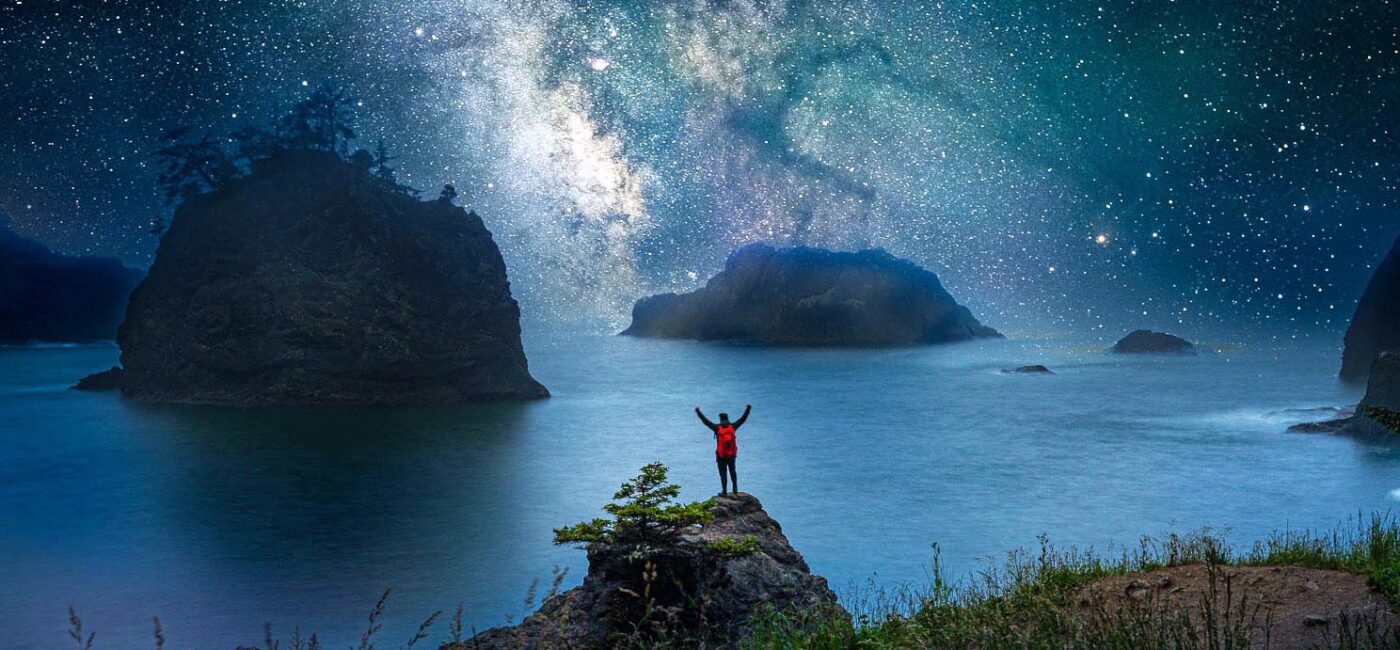Our Milky Way Galaxy appears as a diffuse glow of light transversing the night sky from horizon to horizon. It is best viewed and photographed on a moonless night, hundreds of miles from light polluted cities. It is the spiral galaxy our solar system resides within. From earth’s location (an outer band far from its center pointe) we face inward toward the galactic center during summer to see its tremendous bulge of stars criss crossed with spidery dust clouds and red nebulae. Its faint glow, barely visible to the naked eye, transforms into miraculous detail with the power of today’s digital camera sensors.
Capturing a dramatic image takes some patience and practice with your camera settings in the dark. Wearing a red headlamp allows you to see the camera without ruining your night vision with a bright flashlight.
Here is the formula for success:
- Set your camera on a sturdy tripod. Hang your camera bag from the hook beneath the center of the tripod to sturdy it from wind and vibration.
- Use your fastest lens at its widest aperture. A 16mm to 24mm F2.8 is an excellent choice.
- Set the lens to manual focus.
- Set your camera to manual mode.
- Set your exposure to 15 seconds.
- Start your ISO at 5,000 so you can more easily find a star to focus upon.
- Center the focus screen on the brightest star, enlarge the star’s image in the view screen on the back of your camera (hit the plus sign) and manually focus with your hand on the lens focus ring until the star appears as a pinpoint instead of a “fuzzy tennis ball”.
- Now use the “self timer” mode set at two seconds, so you can touch the shutter without shaking the camera during its exposure.
- Reduce your ISO until the screen shows stars, while keeping the background black-about 1,600 to 3,200 depending upon the darkness of your locale.
- Take a test shot, and adjust your ISO as necessary.
- Even one frame can be spectacular when developed in Adobe Lightroom and “De-noised” with its powerful new AI feature.
- Experts will want to take ten to twenty images and then “stack them together” in either Photoshop layers or a specialty editing tool such as Starry Landscape Stacker.
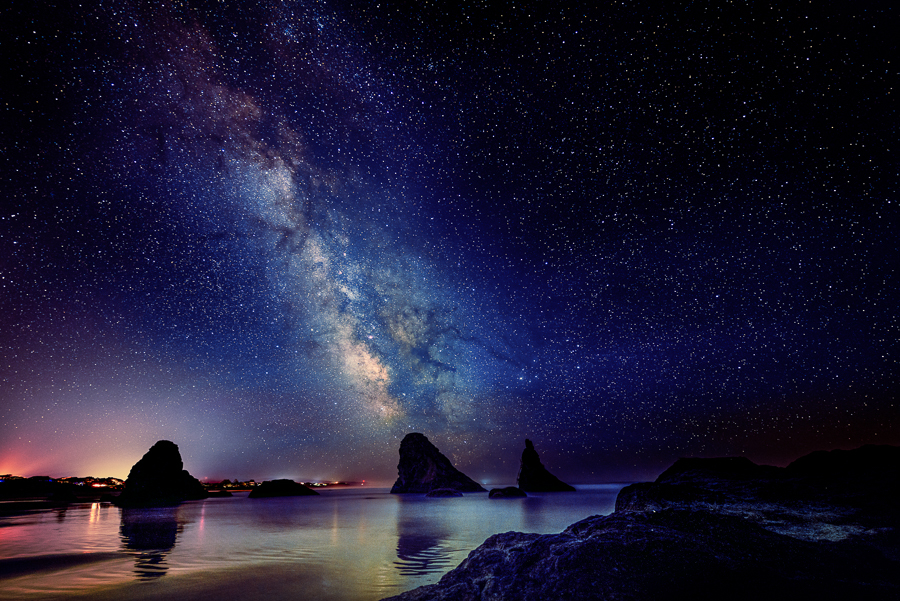
“Chasing the Milky Way” makes for a good story. Here is what it feels like to put on your headlamp and descended the steep coastal cliff at Oregon’s Face Rock Beach:
The time was 2:30am. The parking lot empty. Night air 35 degrees with little wind. Our goal: image the Milky Way Galaxy rising over the ocean and offshore Sea Stacks.
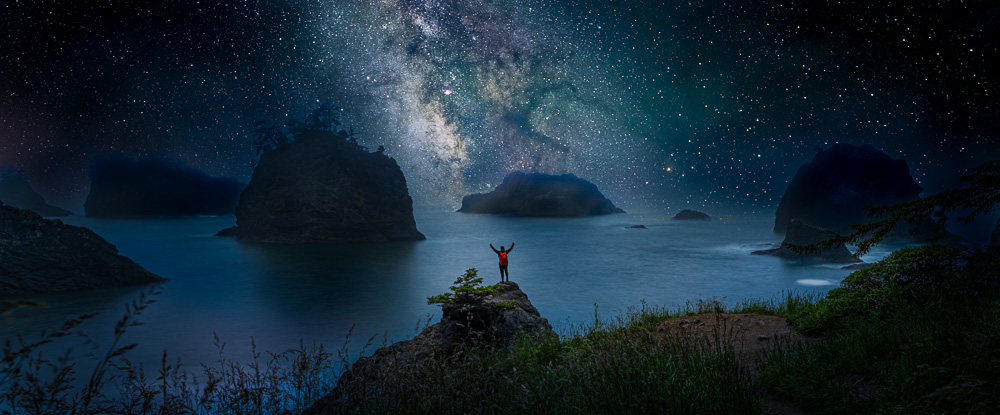
The flashlight’s narrow beam of light illuminated wooden stairs slippery from sea spray, mud and algae. We moved slowly and made sure the rubber soles of our hiking boots made even contact with each step. Holding the side rails helped to keep balance with 30 pounds of camera gear on our backs. My wife Lise and I had planned this moment to be the highlight of our photography vacation. I did not want a mis-step! Outside the flashlight’s beam loomed blackness and void. The unknown surf. An unfamiliar route. Did the previous high tide create tidal rivers we could not cross? Was our pre-planned spot underwater? Or, as we hoped, just dried from the outgoing tide? Safely down sixty stairs, we stepped out onto the hard packed sand, and walked a mile in the darkness, navigating rocks, logs and some unexpected drop-offs.
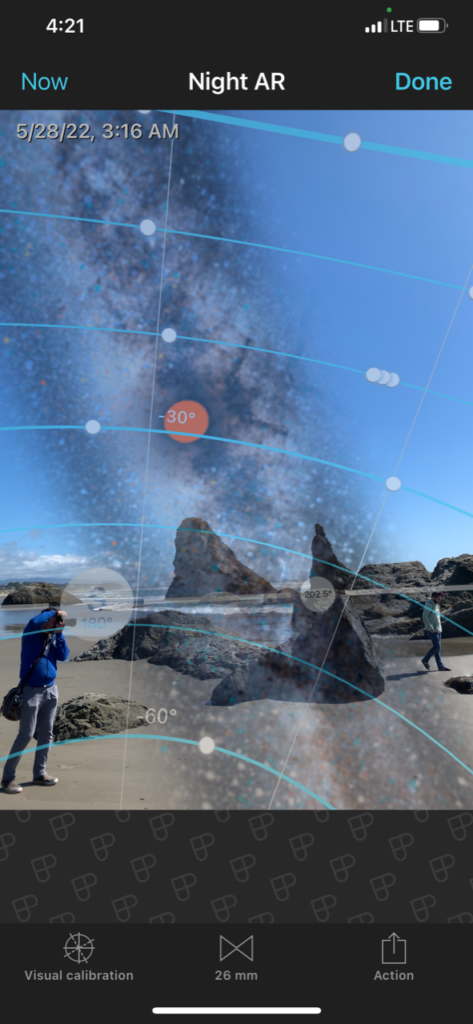
On the beach, in total darkness, the Milky Way shone brightly. My heart raced as I looked up. was a sight Even with the naked eye, we could make out the dust lanes and galactic center.
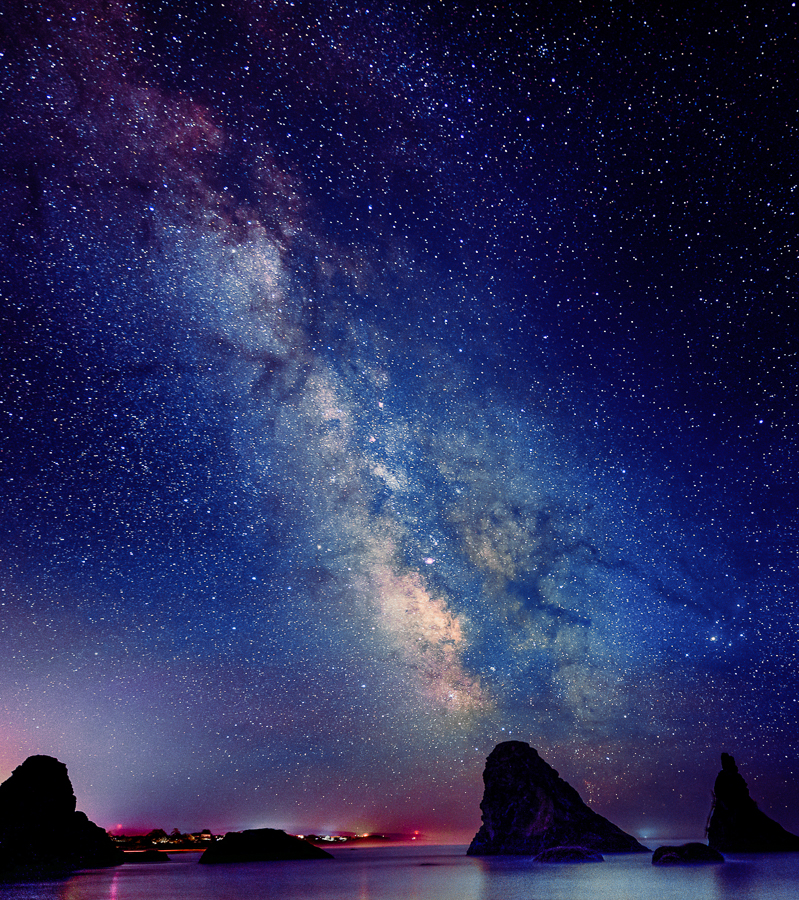

We set up our tripod, focused carefully and tapped the shutter every 15 seconds to take series of shots that would later be “stacked together” while editing to gain every detail possible. With this technique, our camera was acting as a telescope as powerful as those in modern observatories! When we returned home, we would be able to view our planet’s galaxy with colorful vibrance and high resolution!
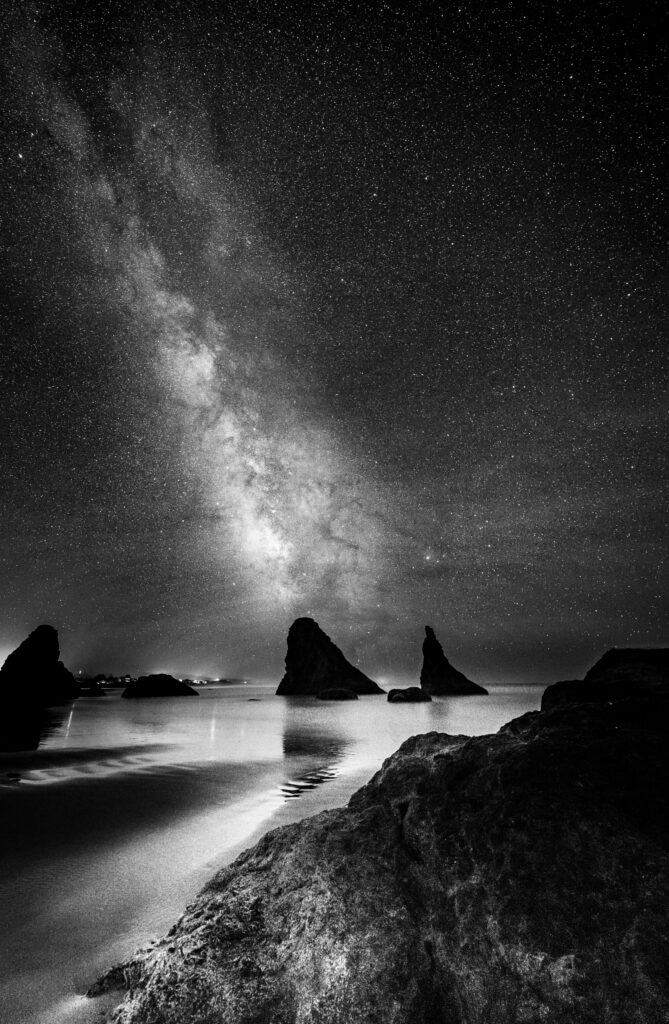
Our Milky Way adventure was a success and I now had numerous frames to stack and edit!
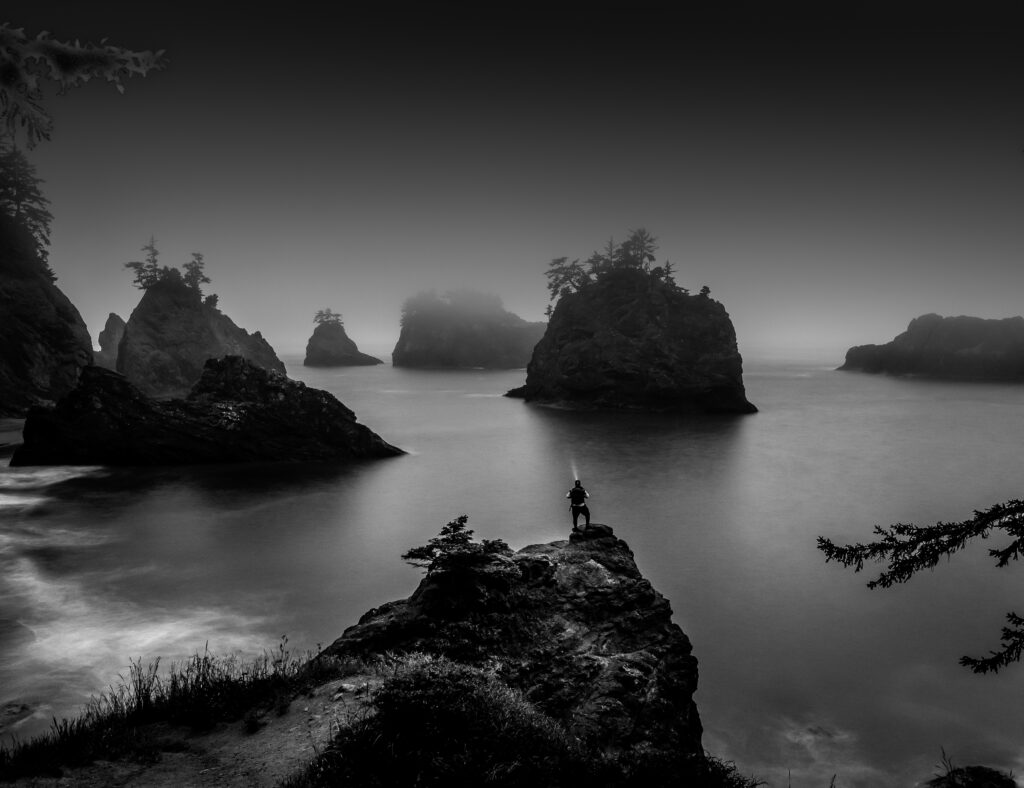
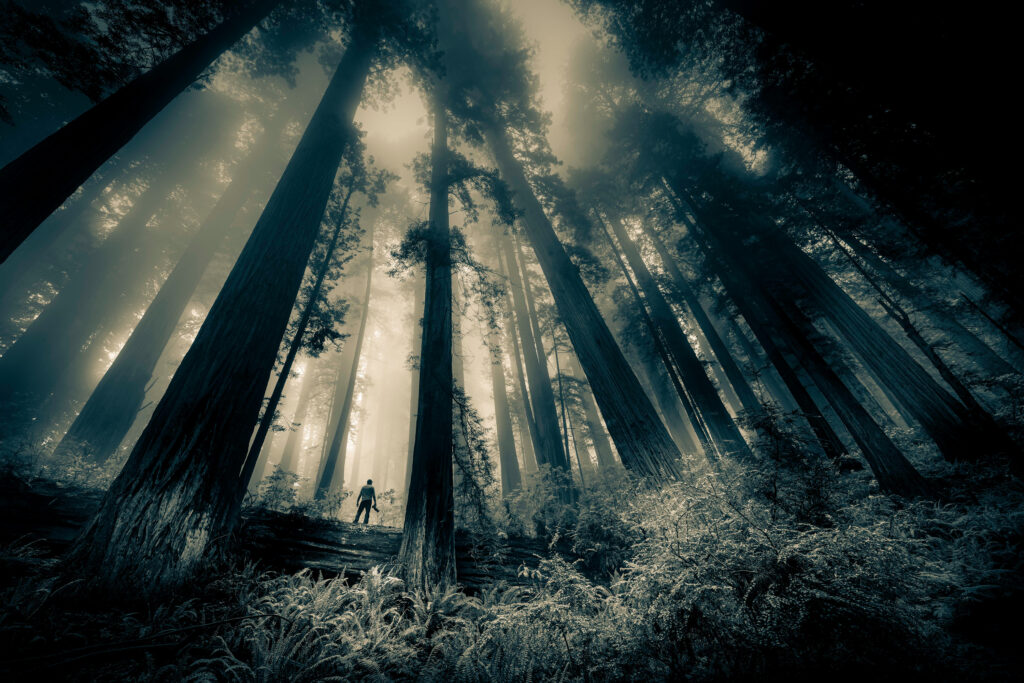
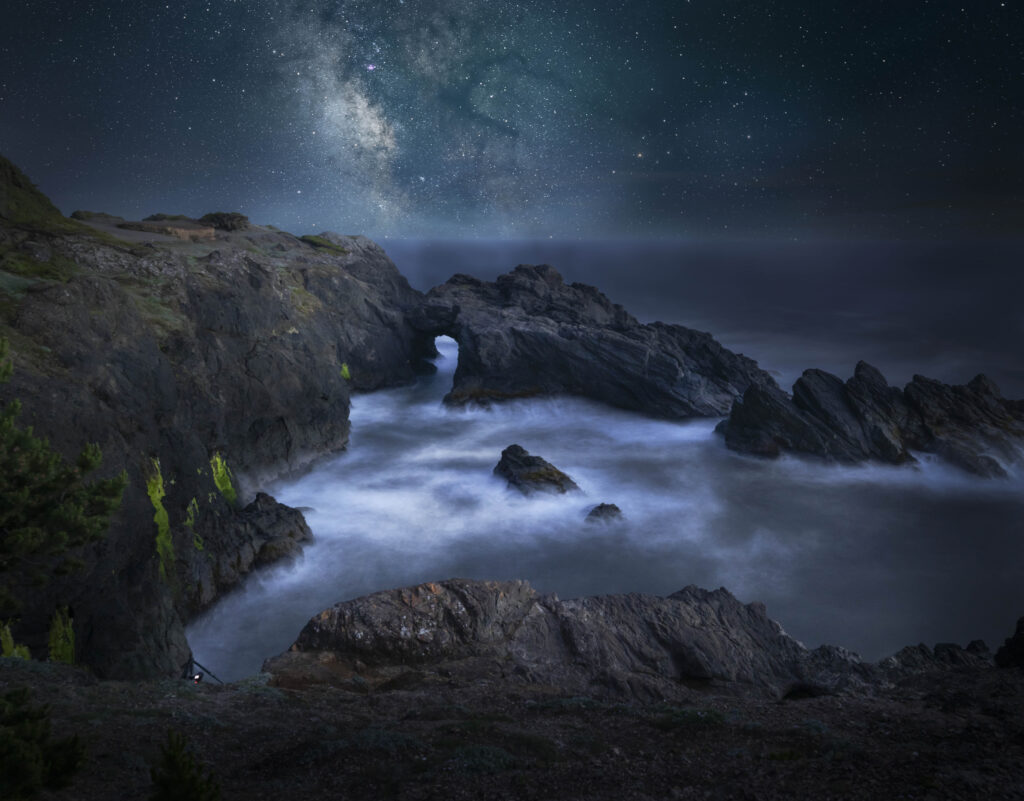
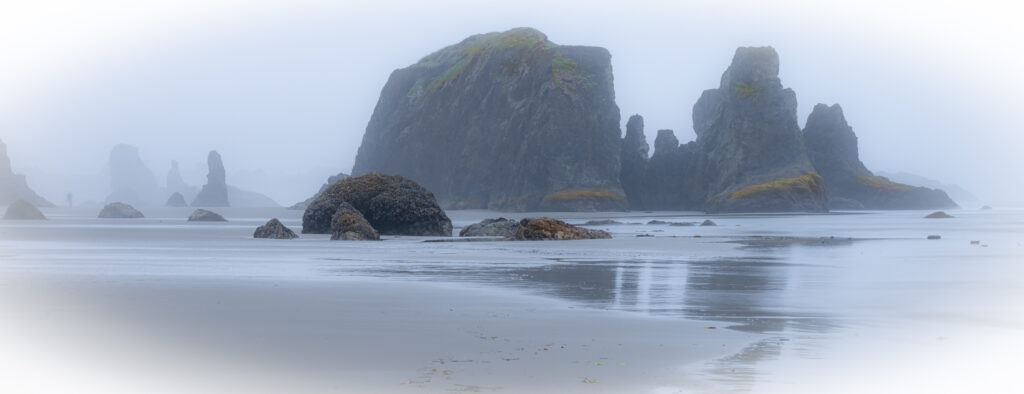
Bob Gibson, a landscape and wildlife photographer and photography teacher, lives in Jupiter, Florida. For more information, e-mail bobgibsonphoto@gmail.com
